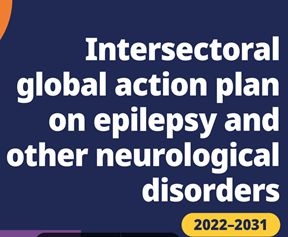Markus Reuber, доктор медичних наук, професор, Академічне відділення неврології, університет Шеффілда, Королівська лікарня Халламшира, Glossop Road, Sheffield, S10 2JF
За останні кілька століть значний прогрес у медицині залежав від клініко-патологічного методу – підходу, що пов'язує конкретні прояви хвороби із певними структурними та патофізіологічними процесами. Більш чітка диференціація медичних розладів та розпізнавання їхніх конкретних причин продовжує надихати на розробку нових та найбільш ефективних методів лікування. Однак є межі прогресу, якого можна досягти, відрізняючи хвороби одна від одної. Стає все очевиднішим, що не менш важливо вивчати зв'язки між «окремими» захворюваннями для більш повного розуміння їхньої патології і того, як вони впливають на окремих пацієнтів (1).
Ризики захворювання чи хронічної патології розподіляються не випадково. У той час як причини мультиморбідності охоплюють складні та взаємодіючі медичні, соціально-економічні, екологічні, поведінкові фактори та досвід, добре відомий той факт, що існують соціальні групи, схильні до більшого і меншого ризику всіх видів недуги (2). Крім неспецифічних факторів, що зумовлюють підвищений ризик захворювання в цілому (наприклад, неадекватне харчування, обмежений доступ до медичних послуг або хронічний стрес), між деякими захворюваннями існують більш прямі зв'язки.
У разі епілепсії двонаправлений зв'язок із психічними розладами в даний час добре відомий (2). На відміну від цього, розуміння зав’язків між епілепсією та серцево-судинними захворюваннями або між епілепсією та розладами кишечника – хоч і визнане– менш розвинене. Мій вибір як редактора з поточного журналу «Seizure», – це систематичний огляд, проведений Alexandra Gabrielsson та іншими, – робить важливий внесок у цю область, узагальнюючи результати восьми попередніх досліджень, що вивчають клінічно важливу, але широко ігноровану тему зв'язку між запорами та епілепсією (3). Основні висновки огляду полягають у тому, що у п'ять разів більше людей з епілепсією (ЛЗЕ) мають симптоми синдрому роздратованого кишківника (включаючи запор) і що більше третини ЛЗЕ скаржаться на функціональний запор. Повідомлялося, що запор є другим за поширеністю супутнім захворюванням у дітей з епілепсією. Також було показано, що він є поширеним побічним ефектом протинападових препаратів. Цікаво, що зв'язок між функціональними розладами кишківника та епілепсією може бути двоспрямованим: у двох дослідженнях було зафіксовано підвищений ризик запорів, що передують появі нападів.
Хоча ці дослідження повинні спонукати клініцистів, які працюють з ЛСЕ, ставити пацієнтам більше питань про їх звички, пов'язані з кишківником, і розглянути можливість модифікації лікування тих, кого турбують запори, вони також повинні спонукати дослідників вивчити зв'язки між двома анатомічно і за розвитком різними системами органів – кишківником та мозком. Є багато причин вважати, що епілепсія та функціональні розлади кишківника (включаючи запори) пов'язані не лише неспецифічними факторами, що опосередковують підвищений ризик мультиморбідності. Кишківник контролюється більш ніж 100 мільйонами нейронів і визнаний як «маленький мозок». Він має прямі аферентні та еферентні нейронні зв'язки з центральною нервовою системою. Нейрони кишківника мають іонні канали, глутаматні та ГАМК-рецептори, здатні пов'язувати протинападові препарати. І останнє, але не менш важливе - вісь «мікробіота-кишківник-мозок», яка не тільки може мати етіологічне значення, забезпечуючи можливий зв'язок між харчуванням, виснаженням, стресом та захворюваннями, включаючи епілепсію, а й потенційно може стати більш значущою для лікування епілепсії в майбутньому.
Література:
- Gaitatzis A, Majeed A. Multimorbidity in people with epilepsy. Seizure 2023;107:136-145.
- Zhu Y, Edwards D, Mant J, Payne RA, Kiddle S. Characteristics, service use and mortality of clusters of multimorbid patients in England: a population-based study. BMC Med 18, 78 (2020). https://doi.org/10.1186/s12916-020-01543-8
- Hesdorffer DC, Ishihara L, Mynepalli L, et al. Epilepsy, suicidality, and psychiatric disorders: a bidirectional association. Ann Neurol. 2012;72:184–191.
- Gabrielsson A, Tromans S, Watkins L, Burrows L, Laugharne R, Shankar R. Poo Matters! A scoping review of the impact of constipation on epilepsy. Seizure 2023, please add bibliographic details.
- Mejía-Granados DM,Villasana-Salazar B, Lozano-García L, Cavalheiro EA, Striano P, Gut-microbiota-directed strategies to treat epilepsy: clinical and experimental evidence, Seizure 2021;90:80-89.
Markus Reuber, Academic Neurology Unit, University of Sheffield, Royal Hallamshire Hospital, Glossop Road, Sheffield, S10 2JF
Over the last few centuries, much progress in medicine has depended on the clinicopathological method – an approach linking particular manifestations of illness with specific structural and pathophysiological processes. The better differentiation of medical disorders and recognition of specific causes continues to inspire the development of new and more effective treatments. However, there are limits to the progress that can be made by distinguishing diseases from each other. It is becoming increasingly clear that it is as important to study the links between “separate” disease entities to gain a fuller understanding of their pathology and how they affect individual sufferers (1).
The risks of illness or chronic disease are not distributed randomly. While the causes of multimorbidity encompass complex and interacting medical, socioecomomic, environmental, behavioural and experiential factors, the fact that there are societal clusters at greater and lower risk of all kinds of ill health is well-recognised (2). Beyond non-specific factors mediating an increased risk of disease in general (such as inadequate nutrition, poor access to medical services or chronic stress), there are more direct connections between some diseases.
In the case of epilepsy, the bidirectional relationship with mental health disorders is now well-established (2). In contrast, the understanding of links between epilepsy and cardiovascular disorders or between epilepsy and gut disorders – albeit recognised - is less well-developed. My editor’s choice article from the current volume of Seizure, a systematic scoping review by Alexandra Gabrielsson et al. makes an important contribution to the field by summarising eight previous studies exploring the clinically important but widely neglected topic of links between constipation and epilepsy (3). The key findings of the review are that up to five times as many people with epilepsy (PWE) have symptoms of irritable bowel syndrome (including constipation) and that over one third of PWE complain of functional constipation. Constipation was reported to be the second most common co-morbidity in children with epilepsy. It has also been shown to be a common side effect of antiseizure medications. Interestingly, the links between functional bowel disorders and epilepsy may be bidirectional: two studies documented a higher risk of constipation prior to the manifestation of seizures.
While these studies should prompt clinicians working with PWE to ask patients more questions about their bowel habits and to consider treatment modifications to those troubled by constipation, they should also encourage researchers to investigate the links between the two anatomically and developmentally distinct organ systems of gut and brain. There are many reasons to think that epilepsy and functional bowel disorders (including constipation) are not merely connected by non-specific factors mediating an increased multimorbidity risk. The gut is controlled by over 100 million neurons and recognised as the “little brain”. It has direct afferent and efferent neuronal links with the central nervous system. Gut neurons have ion channels, glutamate and GABA receptors capable of binding antiseizure medications. Last but not least there is the microbiota-gut-brain axis which may not only be aetiologically relevant by providing a possible link between nutrition, depravation, stress and diseases including epilepsy but which could, potentially, also become more relevant to the treatment of epilepsy in the future.
References:
- Gaitatzis A, Majeed A. Multimorbidity in people with epilepsy. Seizure 2023;107:136-145.
- Zhu Y, Edwards D, Mant J, Payne RA, Kiddle S. Characteristics, service use and mortality of clusters of multimorbid patients in England: a population-based study. BMC Med 18, 78 (2020). https://doi.org/10.1186/s12916-020-01543-8
- Hesdorffer DC, Ishihara L, Mynepalli L, et al. Epilepsy, suicidality, and psychiatric disorders: a bidirectional association. Ann Neurol. 2012;72:184–191.
- Gabrielsson A, Tromans S, Watkins L, Burrows L, Laugharne R, Shankar R. Poo Matters! A scoping review of the impact of constipation on epilepsy. Seizure 2023, please add bibliographic details.
Mejía-Granados DM,Villasana-Salazar B, Lozano-García L, Cavalheiro EA, Striano P, Gut-microbiota-directed strategies to treat epilepsy: clinical and experimental evidence, Seizure 2021;90:80-89.





